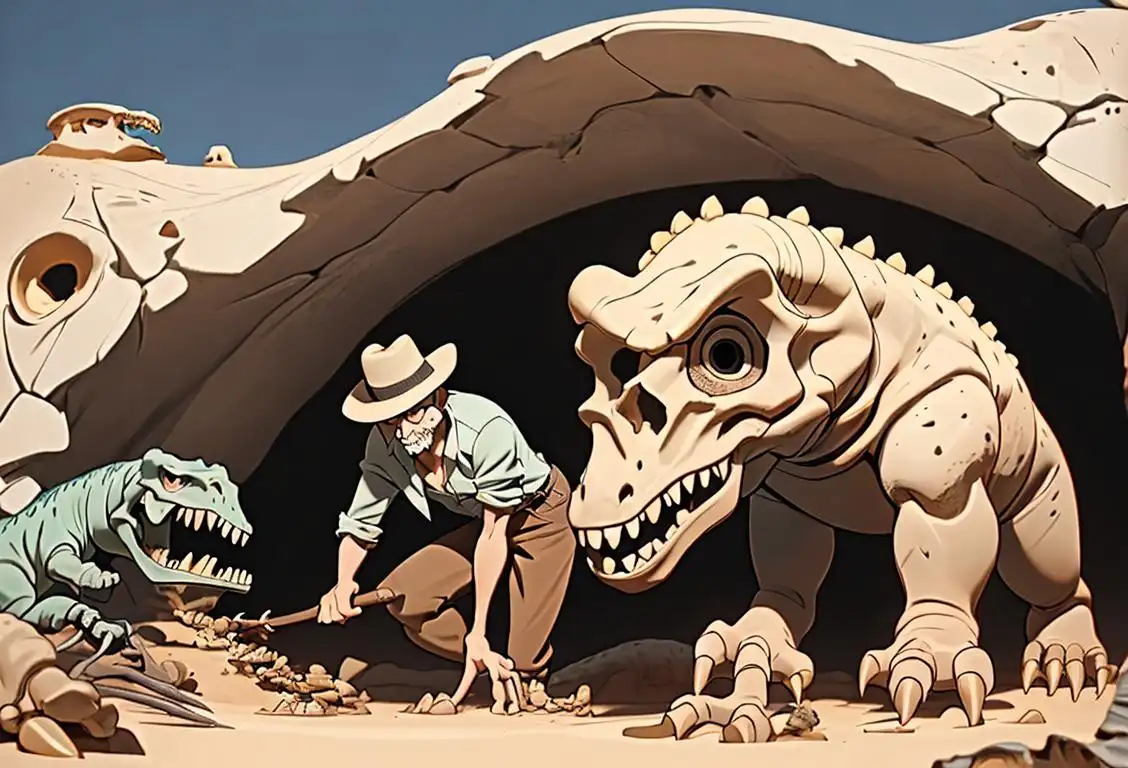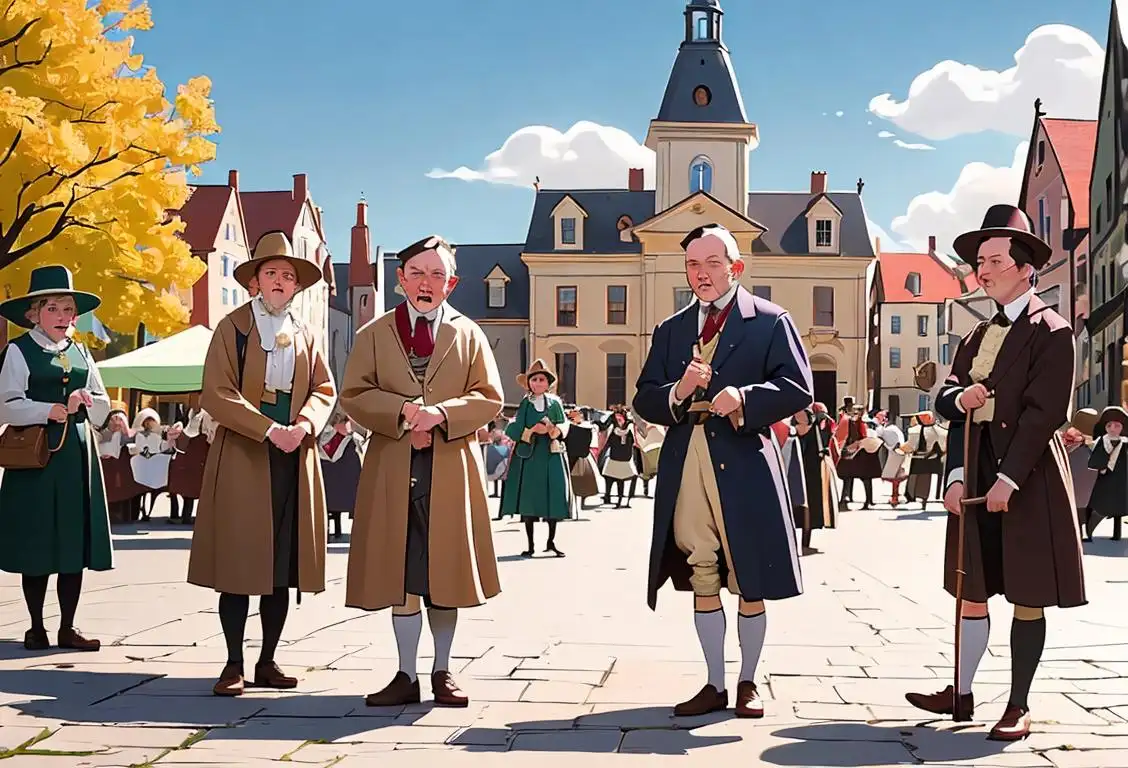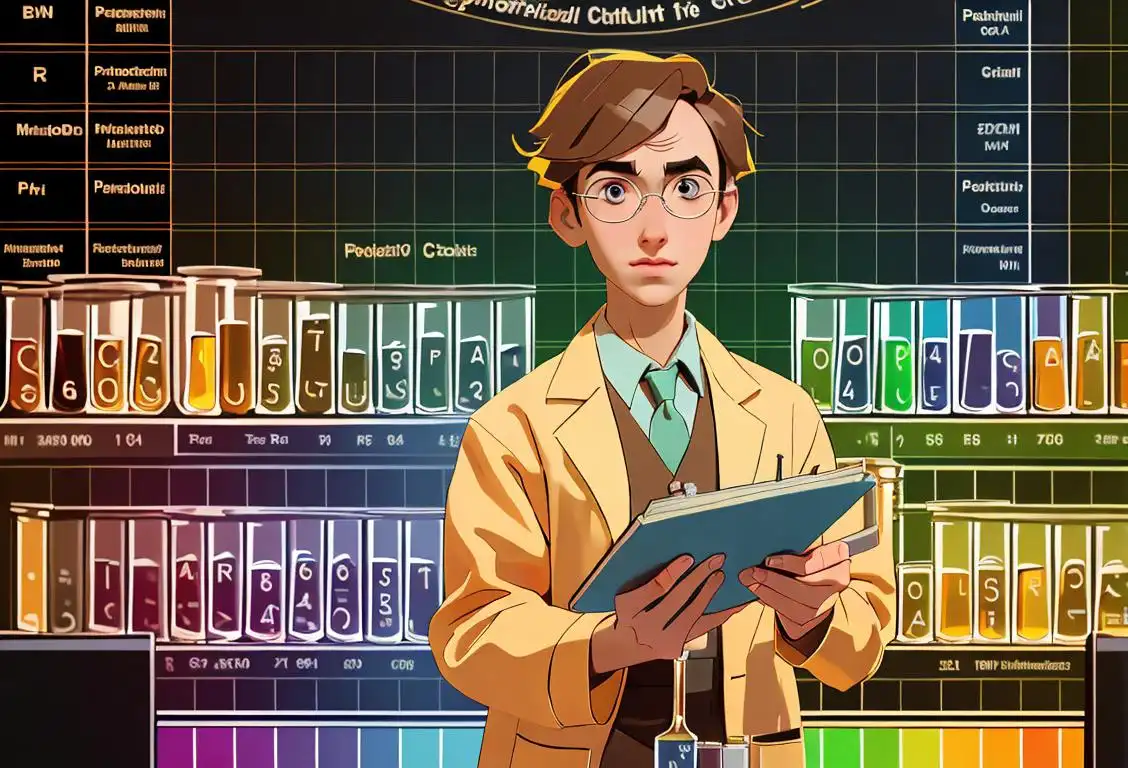National Fossil Day

Hello, dear readers! Clasp your imaginary archaeology hats and dust off your virtual brushes as we delve into the amazing world of National Fossil Day. Get ready for a journey that transports us back in time, and yes, we're talking millions of years, not just a few measly centuries.
When is Fossil Day?
It's national fossil day on the 14th October.
A Day Unearthed
National Fossil Day is a relatively young holiday, with its roots (or should we say fossils?) discovered in the cyber world. With 3542 mentions online, this day reached its peak popularity on 14th October 2020, quite fitting as it's usually celebrated during the second week of October.
Why Fossils?
It's a day to appreciate the significance of fossils, and the part they play in our understanding of our planet's history, evolution and how life existed millions of years ago. It's like our Earth's very own time capsule, if you will. But remember, no fossil stealing. Jurassic Park is not a documentary, folks!
A Bone to Pick
So why is there a day dedicated to these relics of the past? Apart from indulging our inner Ross Geller (Hello, Friends fans!), it's also to promote awareness about the importance of preserving fossils. After all, they're the only trace of species long extinct and a critical part of our natural heritage.
Fossil Fun Day
It might have started online and seen virtual popularity, yet National Fossil Day has also become a real-world phenomenon, giving budding paleontologists and dinosaur enthusiasts a ‘t-REXellent’ reason to rejoice. It's not just about poring over dusty exhibits in a museum or even online tours (which are also wonderful), but also lots of engaging activities and events.
Parting Thoughts
The beauty of National Fossil Day lies in its ability to connect us to our planet's rich heritage, sparking curiosity and understanding. It's the perfect day to take a deep dive into the past, enjoying the detective story of Earth as told by its very own ancient 'Snapchats' encased in rocks.
History behind the term 'Fossil'
1665
The first documented use of the term
In 1665, the term 'fossil' was first documented by Danish scientist, Niels Stensen. He used the term 'fossilis' to describe petrified seashells found in rocks. Stensen's discovery laid the foundation for the study of fossils and the field of paleontology.
1808
Definition of fossil in the modern sense
In 1808, French naturalist Georges Cuvier refined the definition of 'fossil' to its modern sense. He defined fossils as the remains or traces of ancient life preserved in the Earth's crust. This definition broadened the concept of fossils beyond petrified shells to include bones, teeth, and other organic materials.
1830s
Recognition of fossil succession and evolution
In the 1830s, British geologist Charles Lyell and British naturalist Charles Darwin contributed to the understanding of fossils in relation to Earth's history and evolution. Lyell's principle of 'uniformitarianism' proposed that geological processes observed in the present could explain past geological events. Darwin's theory of evolution by natural selection relied heavily on the abundance and characteristics of fossils, providing evidence for the gradual changes in species over time.
1842
Introduction of the term 'fossil record'
In 1842, British geologist Henry De la Beche introduced the term 'fossil record' to describe the cumulative body of knowledge derived from the study of fossils. The term highlighted the importance of fossils in reconstructing Earth's history and understanding past life forms.
20th Century
Advancements in fossil research
Throughout the 20th century, advancements in technology and scientific methods revolutionized the study of fossils. Paleontologists developed techniques such as carbon dating and CT scans to gain more accurate dating and enhanced visualization of fossilized remains. These advancements allowed for a deeper understanding of ancient life, evolutionary processes, and the environmental changes that occurred over millions of years.
Did you know?
Did you know that the word 'fossil' comes from the Latin word 'fossilis,' which means ‘dug up’? Back in the day (way, way back), anything found underground was called a fossil!Tagged
awareness fun history education science fossilsFirst identified
17th April 2015Most mentioned on
14th October 2020Total mentions
3542Other days
Fossil Day
Teacher Appreciation Day
History Day
African American Museum On Mlk Day
Mole Day
Periodic Table Day
Stem Day
Dna Day
Salt Day
Security Education Day








